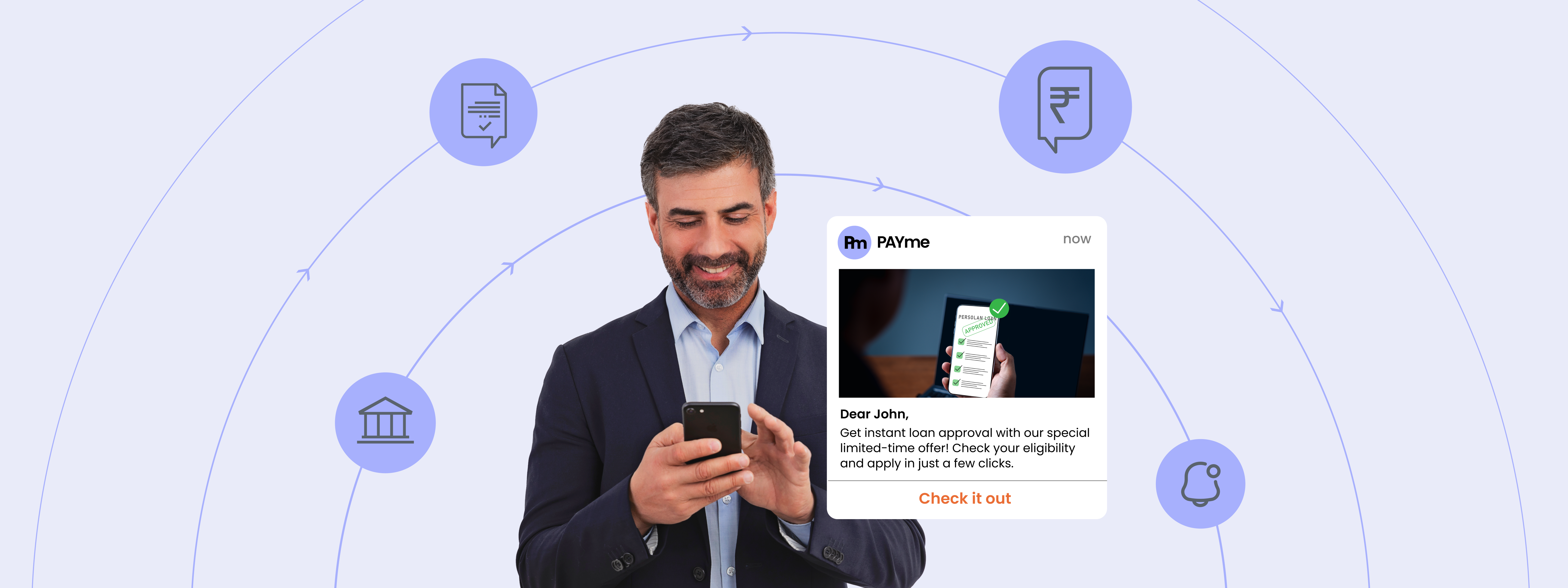Think about the last time you went online to make a purchase. Now think about the number of brands you came across – some new and some that you knew of. While some of us would go for the brand we’ve interacted with before, there will also be those who would want to explore what the new brands have to offer. Be it discounts or the product range in their store.
Add to that the ease of shopping on mobile devices, and you have a distracted shopper at all times!
While as a consumer, more options mean good news. As a business, you’re actually losing sales – slowly and steadily to the increasing competition online.
To counter competition, we’ve seen brands go all out with their acquisition campaigns to reach new customers. But what about the ones that are already your customers? In fact, acquiring new customers is far more expensive than retaining existing ones.
Hence, it is important for e-Commerce businesses to identify and nurture the most valuable customers to drive revenue and business growth.
This is where focusing on the Customer Lifetime Value (CLTV) comes in.
What is Customer Lifetime Value (CLTV)?
Customer Lifetime Value (CLTV) refers to the value a customer brings to your business throughout his/her lifetime with you. This takes into account the first purchase the customer ever makes from your store up until the last one.
CLTV is simply calculated by multiplying the Average Order Value (AOV), the number of repeat sales, and the average retention time.
 Source: Shopify
Source: Shopify
But that’s not all the math you need to do. You also need to understand that Customer Lifetime Value for different shoppers will be different. That’s where you need to calculate the CLTV across different customer segments. More specifically – one-time customers, repeat customers, and loyal customers.
Why?
Well, one-time customers are more often than not seasonal shoppers or discount hunters. These are customers that are simply enticed by the discount you offer or what’s trending in the market.
So you might generate a sale worth $100 from them, but getting them to make another purchase could cost you as much!
On the other hand, a loyal customer is one who has repeatedly made purchases from you. You spent $50 acquiring them, but by now they’ve made multiple purchases from your store – sales worth more than $250 so far. And they’re likely to come back for more, owing to the trust they’ve shown in your brand.
Who do you think has a higher Customer Lifetime Value? Your loyal customers.
But does that mean your one-time customers are worthless? No.
You just need to implement the right marketing automation strategy to improve that customer segment’s CLTV instead. The same holds true for all the customer segments of your e-Commerce business.
Download Guide: A Beginner’s Guide to Retention Marketing for Online Consumer Businesses
Why do you need to improve your CLTV?
I’ll keep this short.
Returning customers have a 60-70% chance of purchasing a service/product again*
It’s also a fact that acquiring new customers costs 5 times as much as retaining existing ones.
And worst of all? Businesses miss out on $1.6 trillion from losing customers to a competitor*
That’s why you need to calculate the CLTV for different customer segments of your e-Commerce business. Additionally, CLTV helps you to:
- Determine how much you should invest in existing customers to drive more revenue.
- Evaluate whether your current acquisition and retention strategy is designed for quick short-term gains or supports sustainable growth.
Now let’s talk about how you can improve it.
How to boost the CLTV of your e-Commerce business?
Different businesses have different target audiences. Different customers are enticed by different strategies to remain engaged with a brand. But more importantly, you will need to continually try different strategies.
Here are some that have proven to work for improving the Customer Lifetime Value for e-Commerce businesses.
- Segment your customers based on purchase behavior
- Set up a customer account page
- Start a customer loyalty program
- Introduce a subscription model
- Address post-purchase order anxiety upfront
- Launch upsell and cross-sell campaigns (on-site and off-site)
- Leverage multi-channel marketing
- Run retargeting campaigns
- Ask for customer feedback and suggestions
- Help customers make the right purchase decision
1. Segment your customers based on purchase behavior
First things first, keep your customers segmented from day 1.
Every shopper is different. The way they choose to interact with your brand is going to be different too. Their motivations behind making a purchase will vary as well and so will how they engage with your brand during their entire lifetime.
You can do this easily by using an e-Commerce analytics platform that brings all your store and marketing data onto one dashboard. Using purchase behavior, your marketing analytics tool should be able to help you create customer segments out of your data. Some of the important e-Commerce customer segments being:
- First-time shoppers
- Cart abandoners
- Big spenders
- Full-price customers
- Discount shoppers
- High AOV customers
- Repeat shoppers
- VIP and loyal customers
2. Set up a customer account page
Everyone’s talking about making it easier for shoppers to complete a purchase. The truth is, the ease of making a purchase is exactly what drives your users closer to you and takes them away from competitors.
Offering guest checkout is one of the most used strategies to get your online store visitors to complete a purchase. But by not nudging a visitor to sign up for an account page, you could be losing an opportunity to capture shoppers’ data.
Think about Amazon for a minute and the first time you made a purchase.
You signed up for an account simply because it made it so much simpler for you to even plan for your future purchase. Right from wishlists, saved addresses to a record of all your previous orders, it brings all your data into one place.
Isn’t that exactly the reason why you keep going back to make the purchase?
In addition to making it easier for shoppers to make future purchases, an analytics platform also gives you plenty of data on your customers. The more the data, the better the personalization of your campaigns, and the higher are the conversions you get from personalized campaign.
Here’s an example of a customer account page from the brand, The Man Company:

3. Start a customer loyalty program
What is it that makes you want to go back to brands like Marks & Spencer, or Zara? Our loyalty towards the brands.
But that loyalty actually comes from the fact that we continually see value in purchasing from them.
That’s where a customer loyalty program comes in to improve your CLTV. By setting up a loyalty program, you’re enticing a customer to make more purchases from you in lieu of rewards that they can avail of on their next purchase.
It’s like giving your customers a reason to come back to make another purchase. Pretty much similar to how when you’re offered exclusive pre-launch coupon codes and you want to avail them right away!
Here’s an example from Sephora that nudges customers to join their Insider program to avail the benefits:
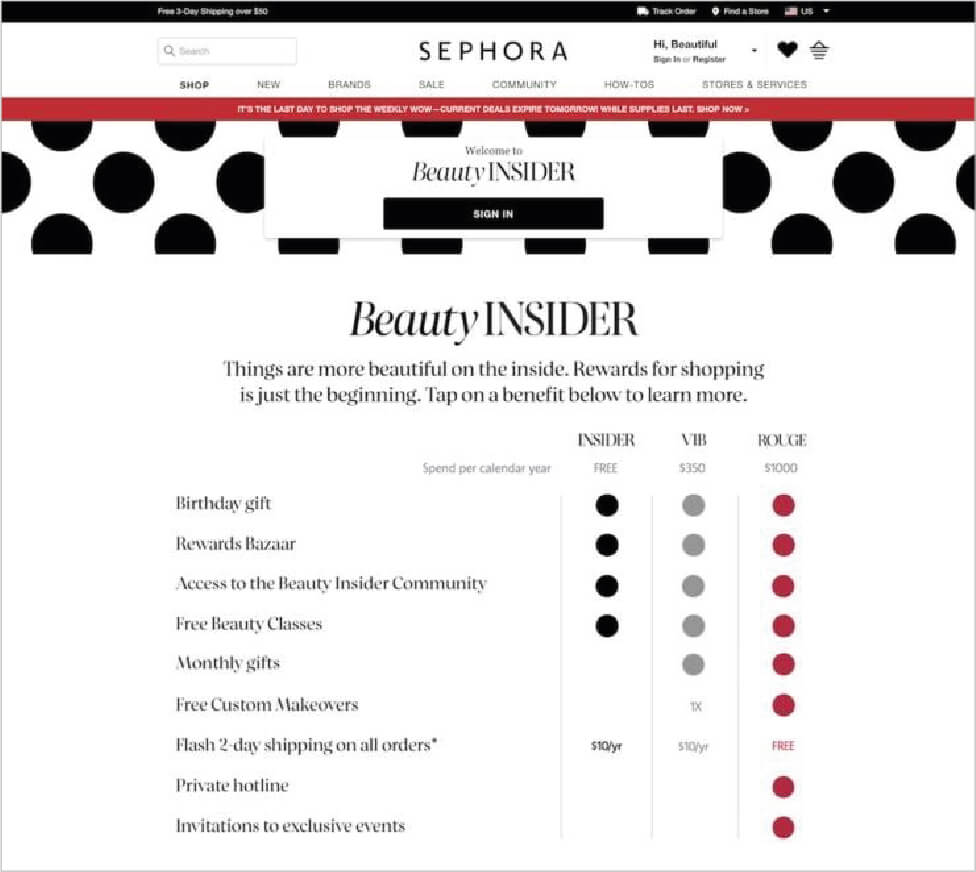
4. Introduce a subscription model
Is there a list of grocery items that you purchase every month? Apart from grocery, there are a lot of other things that we, as consumers, buy repeatedly.
Based on what industry your business is in and what kind of products you sell, setting up a subscription model can increase your CLTV. More than that, it’s like ensuring recurring revenue for your business.
In addition to that, you can also cross-sell and upsell in your subscription model, introducing your new products to your customers. The more products they explore, the more likely they are to come back for more. Especially if the products become a part of their day-to-day affairs.
Here’s an example of a subscription model from Huel, wherein they offer an additional discount to shoppers who opt for it.
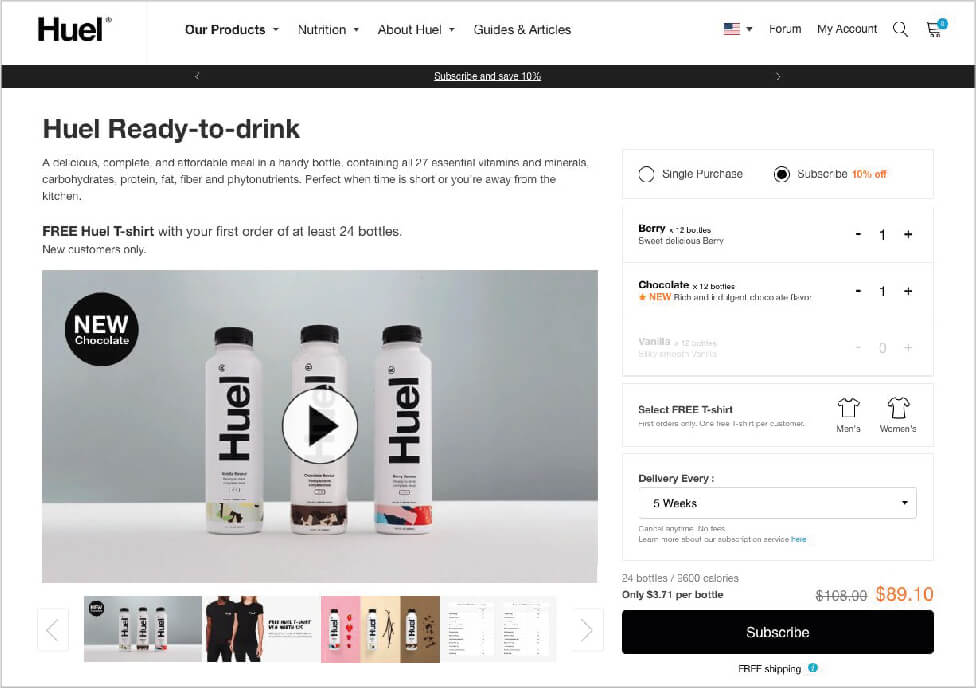
5. Address post-purchase order anxiety upfront
Did you know that 86% of buyers are willing to pay more for a great customer experience? But one bad experience leads to not just losing the customer, but also them telling 15 other people about it. This typically happens when the post-purchase anxiety comes in.
Post-purchase anxiety is when a consumer places an order but due to lack of visibility on the order status, starts to worry about it. They then continually place WISMO (Where Is My Order) calls or send emails to find their order. That’s where the business loses out on the overall purchase experience.
The more worried your customer is, the less likely they are to come back to you.
You can address this by setting up order tracking pages on your E-commerce website and trigger automated status updates on email and SMS.
Here’s an example of an order tracking page:
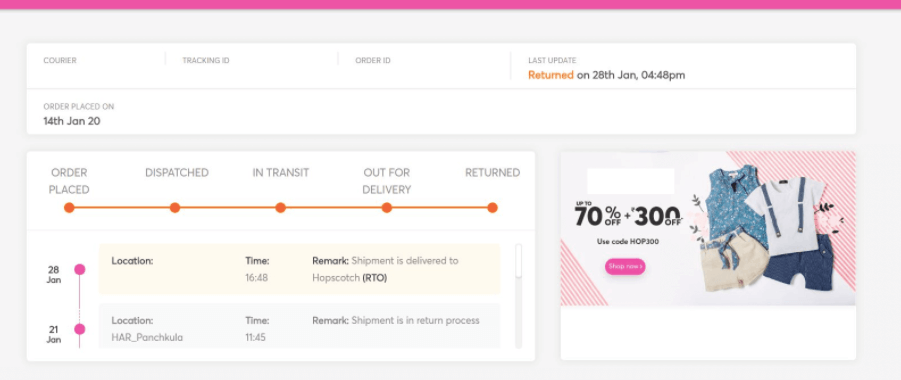
6. Launch upsell and cross-sell campaigns (on-site and off-site)
Don’t wait for consumers to visit your store and explore all your product ranges. Most are so distracted that they’ll probably just land on one page and leave in a few seconds. This negates the chances of improving your CLTV.
Remember to set up cross-sell and upsell campaigns right from the start. Both on-site and off-site strategies that introduce your customers to more products.
For instance, displaying product recommendations on your store will help you make contextual suggestions to visitors. This nudges them to explore more products, increases the dwell time, and makes them want to interact with you, thus increasing the chances of conversions.

Similarly, once a shopper makes a purchase, introduce them to complementing products by sending them an email.
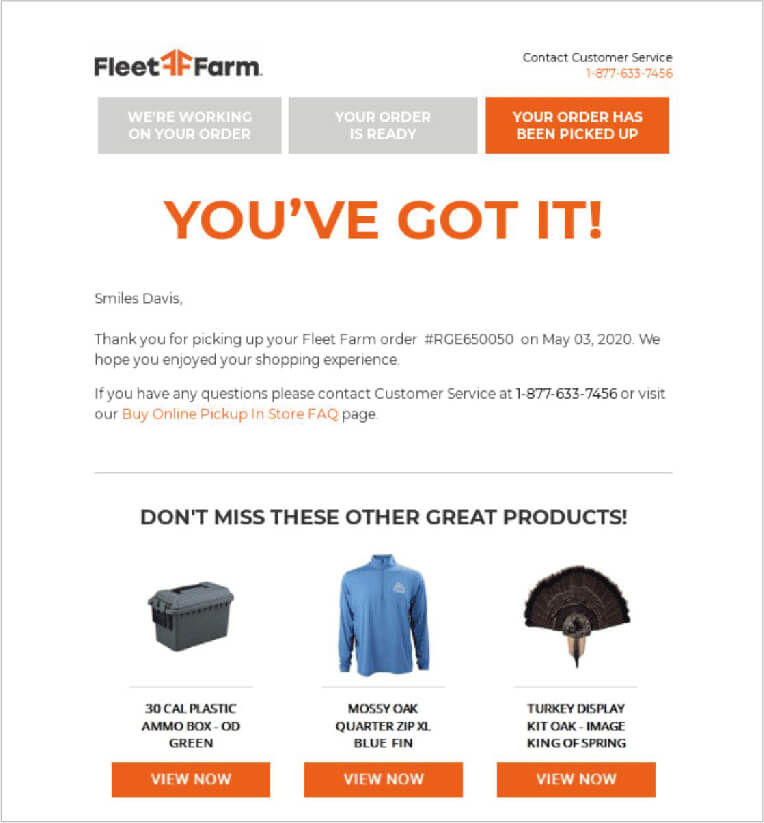
The idea is to let customers know that you want to continually add value to their lives. Proactively executing this strategy will help keep your customers engaged with your brand.
7. Leverage multi-channel marketing
Customers no longer use only one channel to interact with your brand. Rather they exhibit multi-screen, multi-channel behavior.
Why is multi-channel marketing important for your e-Commerce business?
Multi-channel marketing enables you to communicate with your customers across channels maximizing your platform engagement. It also helps you get an understanding of your customers’ channel preferences and their behavior on different channels.
Channels like Email, Web push, SMS, WhatsApp, Mobile & Web push help you engage with your customers for a variety of use-cases like cart abandonment, cross-sell and up-sell, product recommendations, and more.
 Source: Shopify
Source: Shopify
For example, you could reach out to customers on Messenger to share their ratings and review of a purchase they recently made. The channel would get your request to them faster and also make them feel valued, positively impacting your CLTV.
How you reach out to your customers has a big impact on whether or not they interact with you again. For example, many e-Commerce businesses would rather send a generic weekly newsletter instead of focusing on personalizing their email campaigns.
What you send to your first-time buyer should be very different from how you’re reaching out to someone who has made a few purchases from you. For example, the first-time buyer should be nudged to share more details or create a wishlist. On the other hand, the repeat buyer should be nudged to sign up for your loyalty program.
8. Run retargeting campaigns
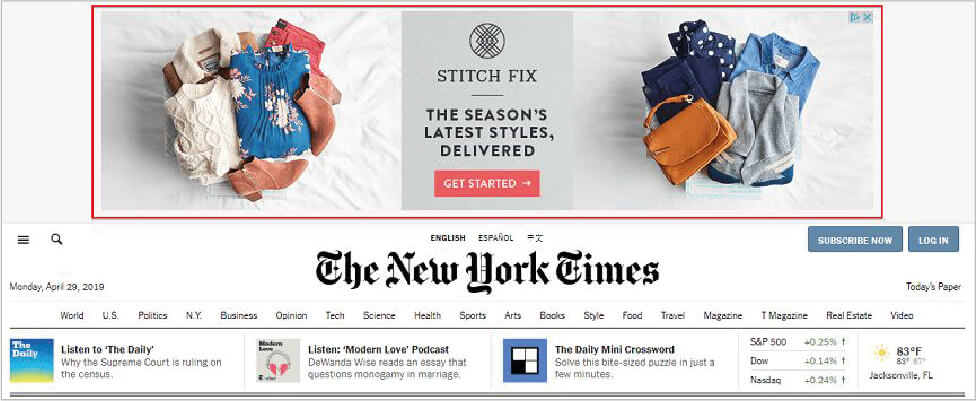
Ever browsed a product on an e-Commerce store and then suddenly been followed by Google display ads across the web?
Retargeting and remarketing ads need to be a part of your customer engagement and retention strategies right from the start. They shouldn’t just be used to recover abandoned carts, but also to continually remain at the top of your customer’s mind.
9. Ask for customer feedback and suggestions
While we’ve covered this as examples in Email, Web Push, and other marketing channels to use, it’s important to make a concrete strategy to get feedback from your customers.
A lot many times you will see brands focusing on simply making a shopper complete the purchase. But what happens after?
Did they like the product? Did they put it to use? Does it add value to them? Was their experience good? Are they satisfied with the purchase?
These are some questions that can make or break your relations with a customer, directly impacting your Customer Lifetime Value.
So remember to collect feedback at every moment of truth:
- At the point of order delivery (using scannable QR codes on the packaging)
- Immediately after the order delivery via Email, SMS, Web Push, Facebook messenger or a phone call
- After a few days from order delivery via Email, SMS, Web Push, Facebook messenger or a phone call
But remember, we’re talking about feedback and not requesting reviews or ratings. They’re very separate things.
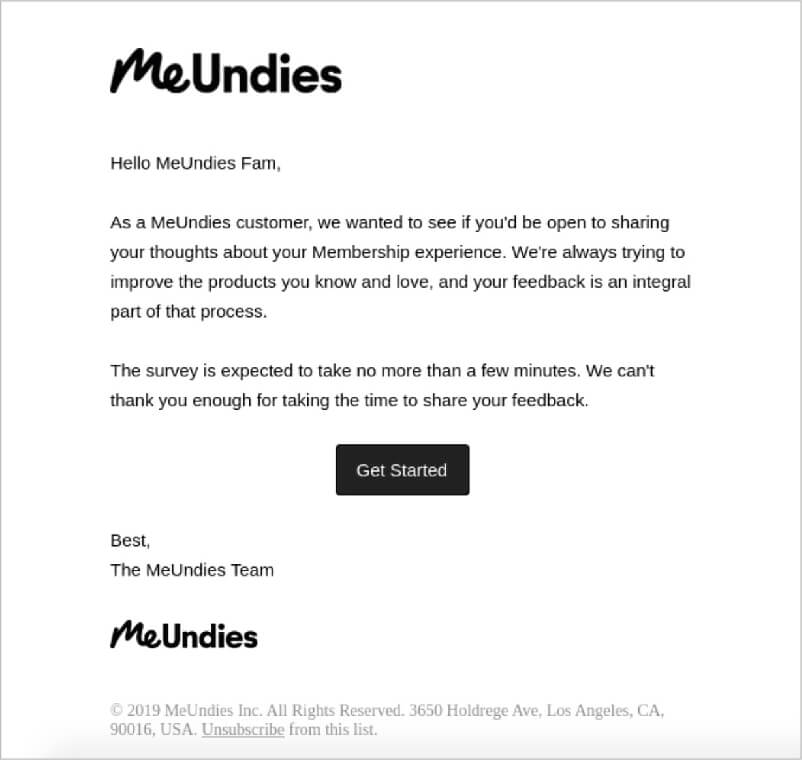
10. Help customers make the right purchase decision
Making more sales is the end goal. But reaching there doesn’t need to be all about pushing discounts and deals in front of the consumer till they make a purchase.
In times when the competition is on the rise, the one thing that is guaranteed to make a customer want to buy from a brand is trust. That cannot be won by the biggest of discounts – it comes only when you make it a priority to help shoppers make an informed purchase decision.
Right from making sure your product pages include all the important information about the item to enabling live chat on your site, this can be done in a number of ways. The idea is to remain readily available to shoppers when they have a query or concern and address those with utmost honesty.

When you help a consumer make an informed purchase, they’re more likely to enjoy the order once delivered. The more they enjoy the purchase they make, the more likely they are to come back for more, hence increasing your CLTV.
Is CLTV really worth so much effort?
The ease of setting up an online store today has led to many brands going online. Add to that the new ventures starting out.
Irrespective of how good a customer’s experience has been with your brand, they’re becoming more and more likely to explore other options available to them. But can you blame them for wanting to check out what else is available in the market? No.
But can you do something about it and have them come back to you? Yes.
In times when acquiring a customer is getting costlier by the day, focusing on improving your CLTV is the actual growth hack to growing your business. Share on XNot losing customers while attracting new ones is a flex that’ll get you ahead!































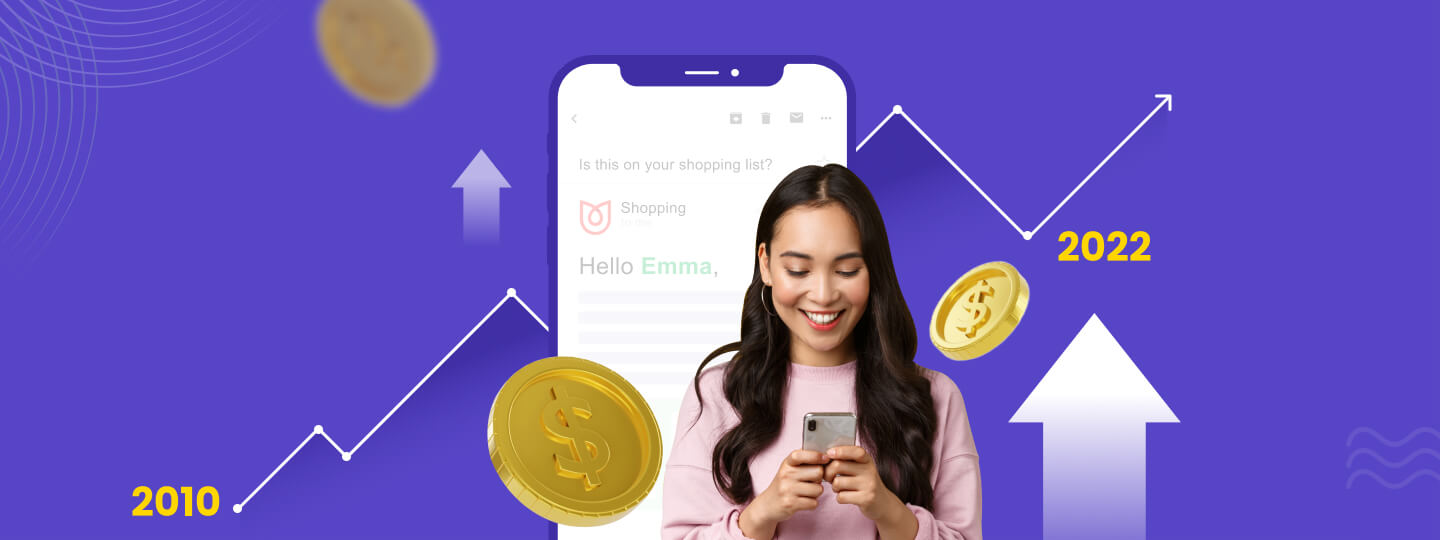


 Diksha Dwivedi
Diksha Dwivedi
 Inioluwa Ademuwagun
Inioluwa Ademuwagun